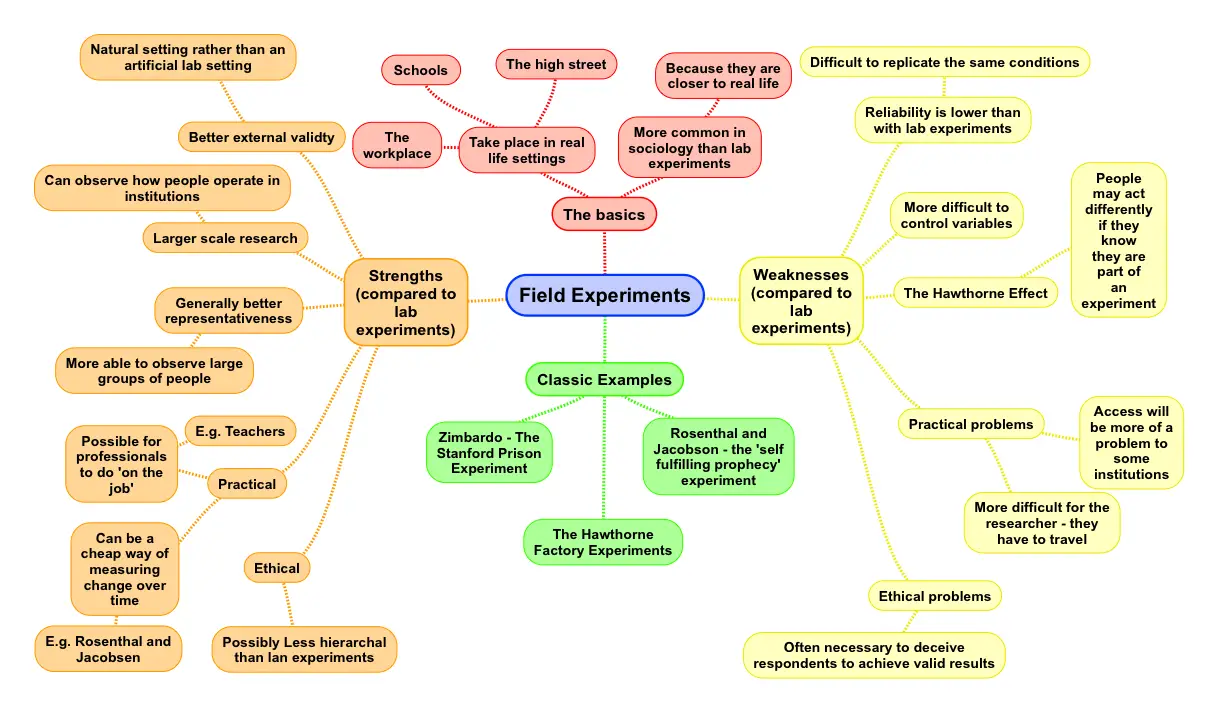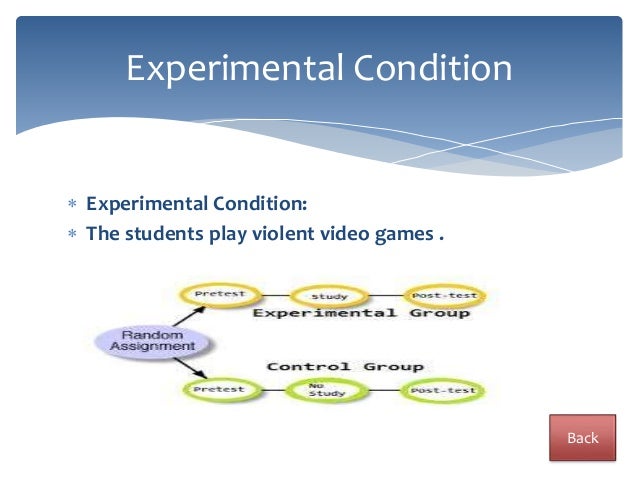Table Of Content

Thus, it is not possible to assign the participants to the group. This involves randomly assigning participants to different groups or treatments to ensure that any observed differences between groups are due to the treatment and not to other factors. Experimental design refers to how participants are allocated to different groups in an experiment. Types of design include repeated measures, independent groups, and matched pairs designs. You manipulate one or more independent variables and measure their effect on one or more dependent variables.
Statistical control
In this case the actual F value for the three factors (brand, time and temperature) are below the critical F value for 1 percent (16.47). This shows that these are not significant factors for the crust formation in the cake. If further optimization of the crust formation is needed, then other factors, such as the quantity of ingredients in the cake (eggs, sugar and so on), should be checked. You can visualize, explore your model and find the most desirable settings for your factors using the JMP Prediction Profiler. Use DOE when more than one input factor is suspected of influencing an output.
Types of Experimental Design
Use arrows to show the possible relationships between variables and include signs to show the expected direction of the relationships. Sometimes your DOE factors do not behave the same way when you look at them together as opposed to looking at the factor impact individually. In the world of pharmaceuticals, you hear a lot about drug interactions. But taking them both at the same time can cause an interaction effect that can be deadly. A unique application of DOE in marketing is called conjoint analysis.
Gaining a Better Perspective With DOE
Conducting an Experiment in Psychology - Verywell Mind
Conducting an Experiment in Psychology.
Posted: Mon, 30 Oct 2023 07:00:00 GMT [source]
In a between-subjects design (also known as an independent measures design or classic ANOVA design), individuals receive only one of the possible levels of an experimental treatment. A strategically planned and executed experiment may provide a great deal of information about the effect on a response variable due to one or more factors. Many experiments involve holding certain factors constant and altering the levels of another variable. This “one factor at a time” (OFAT) approach to process knowledge is, however, inefficient when compared with changing factor levels simultaneously. The randomised block design is preferred in the case when the researcher is clear about the distinct difference among the group of objects. In this design, the experimental units are classified into subgroups of similar categories.
Identifying interactions
Standard DoE processes are often structured around seven or fewer steps. The steps in experimental design will take you through the process of determining what is the best response that you could use in your study, workplace, or procedures. Plus, we will we have support for different types of regression models. For example, we can estimate what we call a linear model, or an interaction model, or a quadratic model. So the selected experimental plan will support a specific type of model.

This information is needed to manage process inputs in order to optimize the output. The study of the design of experiments is an important topic in metascience. This website is using a security service to protect itself from online attacks. There are several actions that could trigger this block including submitting a certain word or phrase, a SQL command or malformed data. Experimental design also allows researchers to generalize their findings to the larger population from which the sample was drawn. By randomly selecting participants and using statistical techniques to analyze the data, researchers can make inferences about the larger population with a high degree of confidence.
An industry example of DOE
In most practical applications of experimental research designs there are several causes (X1, X2, X3). In most designs, only one of these causes is manipulated at a time. It allows for multiple input factors to be manipulated, determining their effect on a desired output (response). By manipulating multiple inputs at the same time, DOE can identify important interactions that may be missed when experimenting with one factor at a time.
Experimental Design: An Introduction
DoE is a useful tool for determining specific factors affecting defect levels in a product, which may be used to improve the design of the product. DoE is used especially in drugs that are best delivered via a time-release schedule,. Because one component of DoE is the settings of factors, performing an experimental runs are applicable here. With DoE, the factors and their levels are checked and see which of them when used are giving the exact quality in the response. If we take the approach of using three factors, the experimental protocol will start to define a cube rather than a rectangle.
Experimental design means creating a set of procedures to systematically test a hypothesis. A good experimental design requires a strong understanding of the system you are studying. Use existing data and data analysis to try and identify the most logical factors for your experiment.
A web-based company wanted to design its website to increase traffic and online sales. Doing a traditional DOE was not practical, so leadership decided to use conjoint analysis to help them design the optimal web page. Doing a designed experiment as opposed to using a trial-and-error approach has a number of benefits. Specify how you can manipulate the factor and hold all other conditions fixed, to insure that these extraneous conditions aren't influencing the response you plan to measure. The output responses considered are “taste” and “crust formation.” Taste was determined by a panel of experts, who rated the cake on a scale of 1 (worst) to 10 (best). Crust formation is measured by the weight of the crust, the lower the better.
Through experimental design, researchers can test hypotheses and make inferences about the population from which the sample was drawn. In a factorial design, participants are randomly assigned to one of several groups, each of which receives a different combination of two or more independent variables. This experimental design method involves manipulating multiple independent variables simultaneously to investigate their combined effects on the dependent variable.
The use of a control group is an important experimental design method that involves having a group of participants that do not receive the treatment or intervention being studied. The control group is used as a baseline to compare the effects of the treatment group. This design involves dividing participants into blocks based on a specific characteristic, such as age or gender, and then randomly assigning participants within each block to one of two or more treatment groups. Within-subjects or repeated measures can also refer to an experimental design where an effect emerges over time, and individual responses are measured over time in order to measure this effect as it emerges.

No comments:
Post a Comment